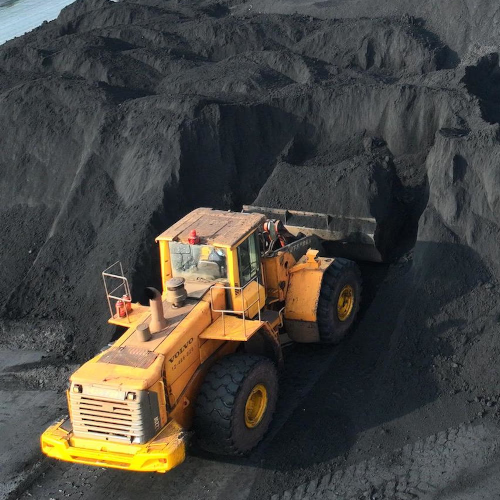What is Coal?
Coal is classified as either lignite, sub-bituminous, bituminous, or anthracite, where lignite contains the least carbon and anthracite the most.
Lignite, also known as brown coal, is coal with low organic maturity. It is characterized by its high moisture content and low carbon/energy content compared to coals such as anthracite. It is mainly used in power generation.
Sub-bituminous coal is softer than bituminous coal and contains more moisture, making it less economic to transport long distances. Sub-bituminous coal has typical bed moisture levels of between 10% - 20% and a carbon content of between 71% - 77%.
Bituminous coal is classified as coal that, in terms of rank, falls between sub-bituminous and semi-anthracite. Volatile matter can vary widely, and bituminous coal is typically divided into three sub-groups - low volatile, medium volatile, and high volatile. Bituminous coal has the required properties to generate steam electric power and is used in manufacturing as well as in coke production.
Thermal/steam coal describes coals particularly suitable for boiler use, i.e., for power generation.
Anthracite is the highest quality coal and is characterized by low volatile matter (always less than 10%) and high carbon content - it contains about 90% fixed carbon, more than any other form of coal. Anthracite has a semi-metallic luster and burns without smoke (smokeless fuel). It is used in domestic and industrial applications and is the least plentiful of all coals.
Large pellets of anthracite are used mainly for household heating and specialized industries such as glass and chemicals. Fine anthracite/semi-anthracite is used in the steel industry for pulverized coal injection (PCI), for sintering and briquetting, and in the ferrometals market as a reductant.
Steel works around the world are increasingly embracing Pulverized Coal Injection (PCI) as a way of lowering operating costs and extending the life of their coke ovens.
PCI is a technique developed by the steel industry that involves the injection of coal directly into the blast furnace, improving operational efficiency and replacing some of the coke used in the blast furnace. Coke is a higher-cost fuel produced in coke ovens using more expensive coking coals.
Traditionally, coals for PCI have been typically high volatile content coals. In recent times, it has been recognized that some anthracite/low volatile coals, previously considered of little value, were suitable for PCI use and offer distinct financial advantages due to:
- A higher replacement ratio of coke than traditional coals.
- Being softer and easier to pulverize.




